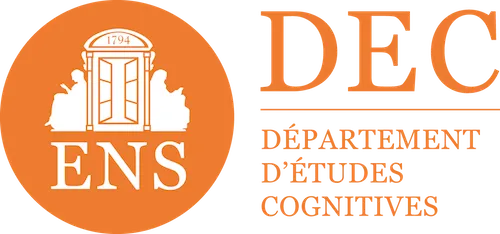

Why an HRIS with an integrated LMS module is (often) a bad choice
Data is converging into an unavoidable reality: choosing an LMS module integrated into your HRIS rather than a dedicated LMS represents a major strategic risk, with measurable consequences on your ROI, educational effectiveness and the commitment of your employees. This in-depth research, based on the latest sector studies and 2024-2025 field feedback, shows why 88% of companies that have made this choice end up migrating to a dedicated solution.
The analysis reveals striking performance differences: companies using dedicated LMS show 218% more revenue per employee, completion rates 82% vs 45-60% for HRIS modules, and an ROI of up to 490% against disappointing results for integrated solutions. Even more alarming, only 12% of organizations really use the learning module of their HRIS, testifying to a massive failure of adoption.
Why are integrated LMS modules costing 3x as much as expected?
The main argument in favor of modules LMS integrated into HRIS is based on an apparent economy: a single supplier, a single invoice, a native integration. This simplistic vision masks a brutal economic reality highlighted by the Gartner and Forrester 2024 studies.
Les hidden costs represent 3.2 times the direct costs for integrated modules (ratio 0.430 vs 0.134), including complex customizations billed at full price by SIRH consultants not specialized in digital pedagogy. Implementation time is exploding: 3 to 6 months for an HRIS module versus 41 days on average for a dedicated LMS. This difference represents months of lost productivity and significant labour costs.
Even more critical, the Vendor Lock-In created by this total dependence on the HRIS supplier generates exponential additional costs. Each educational evolution becomes dependent on the SIRH development cycles, with customization rates reaching 4,000 to 7,000 euros for minor changes. Businesses find themselves trapped in a spiral where educational innovation becomes economically prohibitive.
How do the technical limitations of HRIS sabotage 70% of your learning?
Technical analysis reveals major functional deficiencies that directly compromise the effectiveness of your training courses. HRIS modules, designed for administrative processes, consistently fail to implement cognitive science advances that make a difference in learning.
The lack of support xAPI in the majority of HRIS modules (confirmed by SAP in its technical documentation) prevents the tracking of informal and mobile learning, which is essential in the current context. Without this ability, it is impossible to measure 70% of real learning that occurs outside of formal modules. Authoring capabilities are limited to the upload of PDF documents and SCORM basic, forcing companies to invest in tools expensive externals like Articulate or Captivate.
The impact on engagement is devastating: the generic interfaces of the HRIS modules create a extrinsic cognitive load that diverts attention from learning to navigation. Cognitive science research shows that this friction reduces memory capacity by 30 to 40%. The result: completion rates that peak at 45-60% vs 82% for dedicated LMS, and up to 90% for microlearning modules that are impossible to implement in an HRIS.
Why do only 12% of businesses actually use their integrated LMS module?
Adoption statistics are the most damning verdict against HRIS modules. With only 12% effective use According to the Fosway Group 2024, these solutions demonstrate a fundamental mismatch with the needs of modern learners. This massive underuse represents a considerable waste: licenses paid for but not used, content developed but not consulted, training objectives not achieved.
Mobile ergonomics, crucial while 87% of learners prefer web app access, remains embryonic in HRIS modules, in a world where mobile microlearning represents the future of corporate training.
What crucial educational advances will your HRIS never be able to implement?
Cognitive science research has identified six validated strategies to optimize learning: spaced practice, active retrieval, interleaving, elaboration, concrete examples, and double encoding. Modern dedicated LMSs like Didask implement these principles via sophisticated algorithms, generating 38% improvements in learning efficiency.
HRIS modules, limited by their rigid architecture, cannot implement these advances. The absence of automated spaced repetition causes a loss of 30 to 40% of effectiveness according to Brainscape studies. The lack of immediate personalized feedback prevents optimal memory consolidation, reducing long-term retention by 23%. The impossibility of implementing adaptive learning deprives learners of a personalization that can reduce the time needed to achieve mastery by 50%.
These limitations are not simple technical disadvantages: they directly sabotage the transfer of skills in real life situations. Longitudinal studies show that learners using LMS with integrated retrieval practice demonstrate 15% improvement in transfer compared to traditional HRIS module methods.
2024-2025 trends are widening the technology gap
The LMS market, projected at 70.83 billion USD in 2030 with an annual growth of 19.9%, is experiencing a technological revolution that is leaving HRIS modules definitely behind. Artificial intelligence, adopted by 70% of institutions that already have an LMS by the end of 2026, is radically transforming personalization and educational effectiveness - capabilities that are structurally impossible in the constrained architecture of an HRIS.
Virtual and augmented reality, with a CAGR of 41.2% in training, opens up revolutionary immersive possibilities for technical sectors. Dedicated LMS natively integrate these technologies via open APIs, while SIRH modules remain confined to educational formats from the last century. This planned obsolescence is not just a technological delay: it is a major competitive disadvantage in the war for talent.
The French market, with its regulatory specificities (RGPD) and its innovative players, demonstrates the vitality of a dedicated LMS ecosystem. These solutions, which comply by design with European requirements, offer a crucial competitive advantage in the face of American SIRH modules that are poorly adapted to local constraints.
Concrete cases demonstrate the urgency of migration
Documented field feedback illustrates the extent of the problem. The GARF 2024 analysis of 500 French companies reveals that 67% of SIRH-LMS projects do not reach their educational goals, with total costs exceeding expectations by 25% and deadlines that are 3 times greater than the initial estimates.
On the other hand, migration success stories are edifying. L'Oréal testifies:
The solution adapted very perfectly to our Learning environment, and the support and initial training by the Didask team with expert profiles quickly allowed our teams to adopt the concept and the tools. As a result, we were able to create new training content for our internal team very quickly.
The group then extended the solution to international mobility issues, with a Adoption so fast that they now plan to deploy Didask in all their areas and divisions.
Our analysis clearly positions Didask as compatible with models 2 and 3, but specifically recommends the central option (LMS+ Author tool integrated) for maximum educational impact. This approach allows the creation, distribution and follow-up of engaging training courses by your own business experts, while avoiding the pitfalls of vendor lock-in and dependence on external catalogs.
Conclusion: investing in a dedicated LMS is no longer an option
Faced with these overwhelming observations, persisting with an LMS module integrated into the HRIS is strategic blindness. Performance differences - 28x higher ROI, 7x better adoption rate, 5x higher user satisfaction - leave no room for doubt. In a context where 50% of employees will have to be re-skilled by 2025, compromising the effectiveness of your training system is an existential risk.
For decision-makers who are still hesitant, three questions are enough to decide: Can you afford to lose 218% in potential revenue per employee? Do you accept that 88% of your employees flee your training platform? Are you ready to explain to your board why you chose a solution with 12% adoption when your competitors reached 95%?
It is no longer time for hesitation but for action. Each day spent with an inadequate HRIS module widens your competitive gap. Dedicated LMSs like Didask, designed on the latest advances in cognitive science, represent not a cost but an investment in the sustainable competitiveness of your organization. The question is no longer whether you should migrate, but how quickly you can do it before your competitors take an unstoppable lead.
Make an appointment directly with our eLearning experts for a demo or simply more information.













